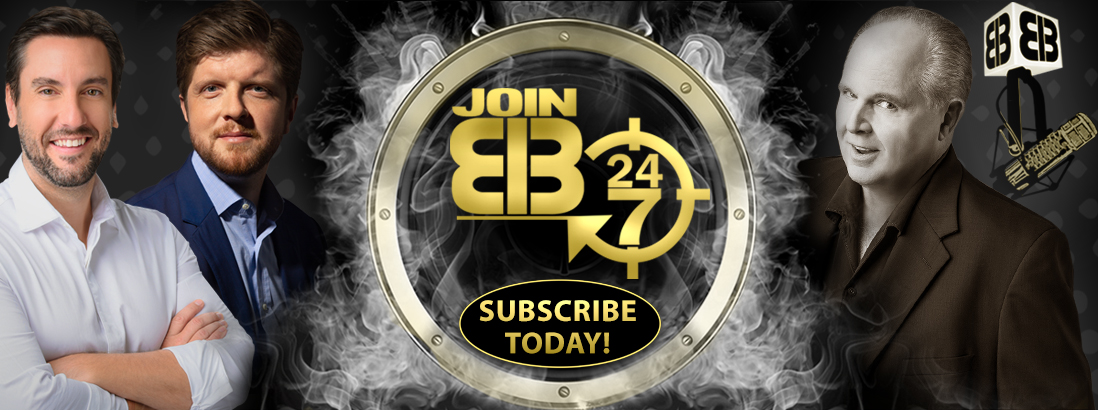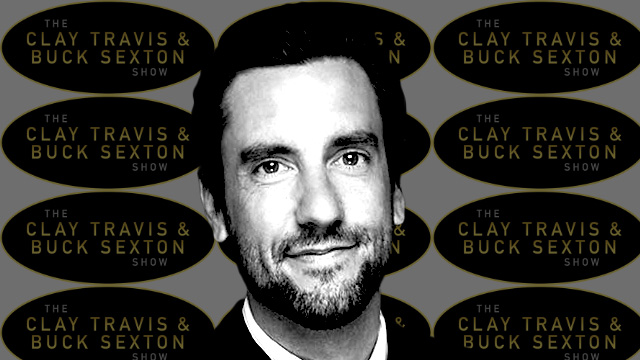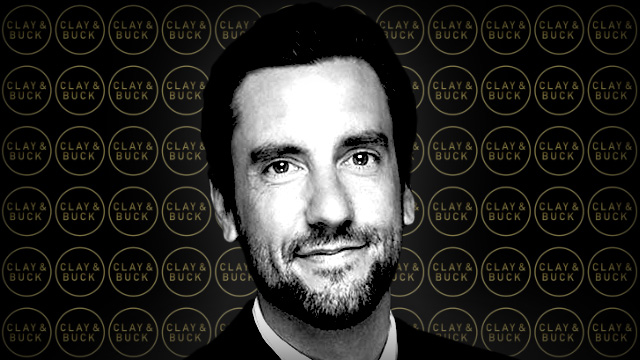Inside Trump’s White House: The Real Story of His Presidency
13 Dec 2021

TRUMP TRIUMPHANT
“How can you recover from some of these books? They are filled with false stories.” — President Trump to the author, in an Oval Office meeting
It was December 23, 2018. Many on the White House staff had scattered for Christmas vacation. The mansion was almost empty, at least compared with most nights. Outside, spotlights illuminated the building and the grounds. Inside, many of the sparkling Christmas decorations had gone dark. Only security and some service personnel remained on the job, and some of them were shifting their schedules to be home with their families as soon as possible.
President Donald Trump was spotted moving among the Christmas trees on the State Floor of the White House mansion. He was alone. In the shadows, hovering nearby, were staff, some using high-density penlights to guide their footsteps, trying to remain invisible. As he passed, the President smiled and bantered good-naturedly, asking about their families. Then he stepped into the Blue Room, where the mansion’s most important Christmas tree was dark, and from the blackness he looked outside at the glittering night. Just to the left, floodlights illuminated the Washington Monument, which towered above the city. Straight ahead, outside, was the massively lit national Christmas tree, and beyond that one could barely see the glowing marble dome of the Jefferson Memorial.
Donald Trump was now at the halfway mark of his first term as President of the United States, but that night he was one lone man, standing in the darkened Blue Room of the White House, with the images of distant marble monuments to other great men reflecting off the windows.
Defying the Gravity. It had been a spectacular ascent. In 2016 Trump had defied the unanimous opinion of political experts by winning the Republican nomination for President. Months later he had defied the experts again by winning the Presidency. On the very morning of the election, The New York Times had given him only a 9 percent chance of winning. He had been opposed by Hollywood, academia, Wall Street, and the national media. Every living President, Republican and Democratic, had voted against him. Two hundred and forty newspapers had endorsed his opponent, Hillary Clinton. Nineteen had supported him. Billionaires had voted against him twenty to one. But he had won in an electoral landslide.
As a candidate he had promised to be “the greatest jobs President God ever created.” But the world’s economists universally scorned him and derided his economic predictions. They were denounced as mathematical impossibilities.
Just before the election, The Washington Post declared that if he won he would “destroy the world economy.”
The day after his election, Paul Krugman of The New York Times predicted “a global recession, with no end in sight.”
Larry Summers, a former Secretary of Treasury and top economic adviser to both Clinton and Obama, dismissed Trump’s budget as “ludicrous.” Summers, who had also once been the president of Harvard University, said it would work if you believed in “tooth fairies.”
“No, pigs do not fly,” said Robert Brusca, senior economist at fao Economics. “Donald Trump is dreaming.”

But by the end of the year Donald Trump’s dreams had become America’s reality. His economy had effortlessly defied gravity. By the second quarter of 2018 the gross domestic product had topped 4.1 percent. Wages were up. Unemployment was down.
cnn had promised “A Trump Win Would Sink Stocks.” Instead, the New York Stock Exchange broke record highs 96 times in his first two years in office. They were even now saying that a recession was imminent and the spectacular growth of the previous two years was finally at an end. But they would be wrong yet again. The boom would continue well into 2019. A market correction would come, of course, at some point, but while the world’s economic growth was stagnant, Trump’s America was still vibrant. By the end of Donald Trump’s first year as President, he had dramatically delivered on the two biggest issues of the 2016 Presidential election campaign: creating jobs and destroying the terrorist caliphate of the Islamic State of Iraq and Syria [isis].
By the end of his second year in office, the growing list of accomplishments had been vastly expanded. It was chronicled by Paul Bedard in a Washington Examiner article entitled, “Trump’s List: 289 Accomplishments in Just 20 months, ‘Relentless’ Promise-Keeping.”
The critics had not anticipated Donald Trump’s upset election as President. They had not believed in his promises of an early economic recovery. They were in denial about the fall of isis, which had lost its 35,000 square miles of territory. Now they were saying that it had not been completely eliminated and therefore the war had not been won. It was like saying that the allies had not really won World War II because there were still Nazis in the world.
Even before he had run for President, still as a businessman, Donald Trump had favored a quote from the German philosopher Arthur Schopenhauer. In 2014 Trump had tweeted, “Talent hits a target no one else can hit. Genius hits a target no one else can see.”
Both Barack Obama and Hillary Clinton had mocked Trump on the campaign trail. “Where’s he gonna get these jobs?” Obama asked. “Does he have a magic wand?” Clinton had ridiculed his “secret” plan to destroy isis. “The secret is that he has no plan.”
What economic and foreign policy experts could not see, what Obama and Clinton could not see, what the media could not see, Donald Trump had seen clearly and openly proclaimed. Like Schopenhauer’s genius, Donald Trump had found a different way to make the government work, and the results were undeniable.
When Donald Trump was first elected President, Robert F. Kennedy Jr. declared that the colorful businessman had a chance to be a great President because he “thought outside the box.” It was Trump’s iconoclastic, sometimes outrageous methods that allowed him to jump-start an economic recovery. In the process, the forgotten American middle class was able to once again find its footing and renew its dreams. And it was Trump’s ability to think outside the box that had finally brought the elusive isis to heel.
Ironically, the more hysterical and desperate the attacks on President Trump and his family, the more outrageous the move toward impeachment, the more deeply the Trumps would be etched into the marble of history. Future writers would not be moved by fabricated stories dubbing him a Russian spy. Or by the national publication that promoted false and vulgar stories about the First Lady. Or by popular late-night comedians who asked their television audiences to promote pornographic images about the Trump family.
In time, the gleeful, obscene, personal attacks on the Trump family, egged on by corporate media executives and promoted by their chosen public figures, would make most reasonable observers recoil. History would be built with facts, not by the crude emotion that was used to drive television ratings. Yet that very passion, intended to diminish Donald Trump, ultimately strip him of power, and reverse the will of the people who had elected him President, only ensured that his hours and days in the White House would be more memorable. The accusations added to the drama and helped ensure that the real achievements would not be forgotten. Eventually, the stories that were false would be ground to powder by history. Meanwhile, their very whispered existence would be an irresistible lure for writers, artists, and playwrights. They would add to the fascination and mystery of this rich and powerful family.
Writing an Official History. In January 2019, I would begin writing the authorized history of the Trump Presidency. It would be the beginning of months of discussion with the President, his family, and senior members of his Administration. At the time, I fully expected that this would be an unprecedented and fascinating journey into the most colorful Presidency in American history. But nothing quite prepared me for what was to come.
It would turn out that the third year, the year that I would be working, would unfold as one of the most eventful years in our nation’s history. The Presidency itself, and our democracy, would be put to the test. And I would be there, on the inside, capturing it all. My job would be to take the readers with me on this journey, inside the White House and inside the Trump family, and let them see and hear what I was witnessing. This was a chance to capture these important events of history from a different angle, from inside the eye of the storm, looking back out at the ferocious winds swirling around them … My intention was to write something accurate and something fair.

…“I’m so glad you are doing this,” the President’s son Eric Trump said, interrupting his own narrative in the middle of one of our interviews. “There are so many books out there that have it wrong.”
“I have two thousand stories,” the President’s daughter Ivanka Trump told me.
“I will take them all,” I answered.
“Want to hear the real story of how dad picked Mike Pence?” Eric Trump teased during one of our conversations. “There’s a book out there, but the facts are all wrong.”
“I’m ready!” I laughed.
…
The Enigmatic Role of Jared Kushner. During the first days of my research, Jared Kushner, Ivanka’s husband and the President’s brilliant son-in-law, was an unseen presence behind many of the stories I was pursuing. Most of the big things that happened in Trump’s first two years had his fingerprints all over them.
At first they were impossible projects that Jared himself was pursuing quietly at the President’s behest. Early in the Administration some staffers were irritated, fearing that Kushner was stepping into their hotly contested territory, but no one formally objected. Why should they? Jared’s projects weren’t going anywhere. To complain would only give Kushner more credibility.
With time, when those impossible projects bore unexpected fruit, Jared Kushner’s White House reputation grew to legendary proportions. He became the President’s fireman, called on to save projects that were burning out of control. My own young team of researchers began to see him in almost heroic terms, often concluding, “This sounds like something Jared Kushner has done.”
Eventually it became clear that the secret to both Jared and Ivanka Kushner was the President himself. He was the power at work behind his son-in-law and his daughter, not the other way around. This was Donald Trump at work, bypassing his own bureaucracy and short-circuiting the lines of authority to get his business done on his own hurried timetable.
For several months, there was a very real question of whether or not my access would extend to Kushner. He was a prominent behind-the-scenes figure in all the other books, and yet none of them had tapped him as a source. All the stories were told second- or third-hand. Would he ever be available for me?
Eventually, cautiously, that door was finally opened, and as I expected, it revealed a rich vein of insider treasure. At first, Jared Kushner wouldn’t let me record our interviews, forcing me to rely on scribbled notes. But his stories were the biggest of all, told from a couch in his Georgetown home, with a crackling log in the fireplace nearby, or told from his office squeezed between the Oval Office and the chief of staff’s suite in the rarified south hallway of the West Wing. Every story was worth patiently waiting out. My young team was impressed. “You are now actually interviewing Spiderman?”
As it turned out, Jared’s biggest fan was his eight-year-old daughter, Arabella. She apparently followed the news on her own computer and had developed her own metrics for measuring results. When he came home late from the White House one night, after seeing a criminal justice reform bill signed into law, Arabella greeted him at the door and then ostentatiously spoke to her computer, “Siri, how many innocent persons has Jared Kushner helped get out of prison?”
The artificial intelligence hadn’t yet caught up with the facts and couldn’t give her an answer, so Arabella announced it herself. “Until yesterday, my daddy had spent his whole life and had only helped two persons get out of prison. Today, he helped ten thousand go free. Hmmm. Not a bad day, Daddy.”
…
An Impactful President. When I finally sat down with President Donald Trump himself and turned on my voice recorder, he would become the sixth American President I have interviewed. And as the months progressed, he would become the fifth American President that I would get to know. It would be my humble privilege to serve as an adviser to two of them, to coauthor a book with another, and to be one of the few living authors to have written about all of the 44 Presidents.
Donald J. Trump may be the most impactful President in modern American history.
That was my conclusion after reviewing his first two years in office.
Other Presidents, such as Gerald Ford, Jimmy Carter, and Ronald Reagan, desperately sought energy independence. Donald Trump found it.
Some Presidents saw young, nonviolent drug offenders as threats to society and changed laws to put them behind bars. Donald Trump got them jobs.
In 1964, President Lyndon Baines Johnson had declared “all-out war on poverty and unemployment in these United States.” Johnson gave the poor subsidized housing, food stamps, and welfare based on the number of children in a family. Under Donald Trump, unemployment would fall to the lowest levels ever recorded in American history, and 6 million Americans would be able to get off food stamps.
Other Presidents, both Democratic and Republican, stood by as crony capitalism corrupted the nation. It was seemingly the poor and senior citizens on fixed incomes who financed the process. Retirement funds suffered. But in the first two years of Donald Trump’s Administration, free enterprise erupted. Many senior citizens saw a greater return in retirement accounts in Donald Trump’s first two years than the 16 years of the two previous Presidents, Bush and Obama.
The middle class, who had seen the value of their homes wiped out by the years of Bush and Obama, now saw that value coming back.
Other Presidents avoided tax reform. Even Ronald Reagan took five years to get it done. Donald Trump did it his first year in office.
Other Presidents stumbled over Supreme Court nominations. Liberals had come to expect their own judges from Democratic Presidents and an occasional liberal judge, as a gift, from a Republican President. The liberal social and cultural agenda, abetted by the national media, saw itself ahead of the voters in attitude and thus dependent on the judiciary to do what the voters would not.
Donald J. Trump was different. Elected with the help of conservatives, libertarians, and labor Democrats, he kept his promise and nominated a conservative, Neil Gorsuch, as his first Supreme Court justice and Brett Kavanaugh, another conservative, when he had a second chance. The American left was outraged. Protestors, some paid by the leftist billionaire George Soros, shouted obscenities in the halls of Congress and interrupted Senate hearings. The process became fierce and contentious. There was every expectation that Trump would back down and withdraw the nomination as past Republican presidents might have done.
Trump never wavered. Brett Kavanaugh was duly confirmed. At the end of his first year in office, Donald Trump would appoint four times as many federal appeals judges as Barack Obama and more than any other President in American history.
…
No Time for Mar-a-Lago. On December 23, 2018, Donald Trump was one lone man, standing in the darkness in the Blue Room of the White House, with the glow of distant marble monuments reflecting off the glass windows. More challenges and more bitter attacks were coming his way. He had lived a long and eventful life, creating an immortal brand name and reaching the pinnacle of world power. Yet ironically, he knew that the greatest challenges of his life were coming in the days just ahead of him. That Christmas the findings of special counsel Robert Mueller, who was investigating the President, hung over his White House like a dark cloud.
Just after noon on Christmas Eve, Donald Trump had tweeted, teasingly, “I am home alone (Poor me) in the White House waiting for the Democrats to come back and make a deal on desperately needed Border Security.”
The President had been looking forward to the balmy breezes and moonlit nights of his Florida estate. The plan was to take his family to the midnight Christmas Eve services at the Episcopal church of Bethesda-by-the-Sea. It was becoming a new Trump family tradition. He and Melania were married in that church. After the Presidential election in 2016, when the President-elect and the new First Lady had gone there for Christmas services, they had received a standing ovation. They had come back the next year, this time with their son Barron.

So Florida and Mar-a-Lago represented a much-needed time for family and friends, an escape from the cruel political winter of Washington, D.C. — but then, Trump was a fighter. If there was a chance for “his wall” and thus delivering on one more campaign promise, he would take it.
Jared Kushner had left for Mar-a-Lago the Saturday before Christmas and would come back the next Wednesday. Before leaving the city, he had told the President, “I can stay with you.” He didn’t like the idea of Donald Trump spending the holidays without family. “You don’t have to be alone.”
“No, no, you go to Florida with your family,” the President had insisted, then added wistfully, “You know, I own Mar-a-Lago. I have all these other houses I own. I can stay in them anytime I want. This one is a rental. So I’ll just stay here and enjoy it.”
Jared smiled when he related the story. “He knew perfectly well that the White House didn’t belong to him, that it belonged to the country and that his stay would be brief.”
…
Melania Comes Back for Christmas. The next afternoon, on Christmas Eve, December 24, 2018, First Lady Melania Trump flew back to Washington, D.C. to be with her husband. She and the President took calls to Santa Claus. It was becoming a new Presidential tradition. Back in 1955, a child had called the North American Aerospace Defense Command [norad] to ask to speak to Santa. Now norad took calls every year and the First Lady, at least, loved it. The media was allowed in to record a few moments and picked up a comical exchange between the President and a seven-year-old boy named Coleman.
“Are you still a believer in Santa?” the President asked. “Because at seven, it’s marginal, right?” They talked and the President listened for a while and then laughed, “Well, you just enjoy yourself.”
Melania had clearly been able to shake her husband out of his lethargy. Near midnight, they attended the Eve of the Nativity of our Lord Jesus Christ Festival Holy Eucharist at the National Cathedral. They were escorted to the front row.
The President and the First Lady appeared happy to be with each other and to enjoy the familiar Christmas Eve service. The massive organ shook the cathedral, and the young voices of the choir echoed into the highest rafters of the church, the boy sopranos reaching the impossible octave above the others. “Hark the Herald Angels Sing.”
Some of the recent mysterious movements by the President and First Lady and some of their coy conversations with family over the holiday had been for security reasons. They were planning a secret trip to Iraq together to visit the troops. It would be his first Presidential visit into a combat zone and one of the few times ever for an American First Lady. The Secret Service had not wanted it at all, but she had insisted. She would not let him go alone. They would fly out together on Christmas night.
When the congregation at the National Cathedral turned softly to “Silent Night,” there was a hush and the President gripped Melania’s hand. It would be the last silent night for the Trump family for many months to come.
From Inside Trump’s White House by Doug Wead. Published with permission from Center Street Books, Hachette Book Group.
Recent Stories

De Blasio Imposes Vaccine Passport Mandate In NYC test
This is an excerpt that Jaime updated. ffffffffffff

Buck Draws Heat For Speaking Truth About Simone Biles
I just wanted to establish what the current president was saying back on ABC News in March to George Stephanopoulos about his feelings on Governor Cuomo.






